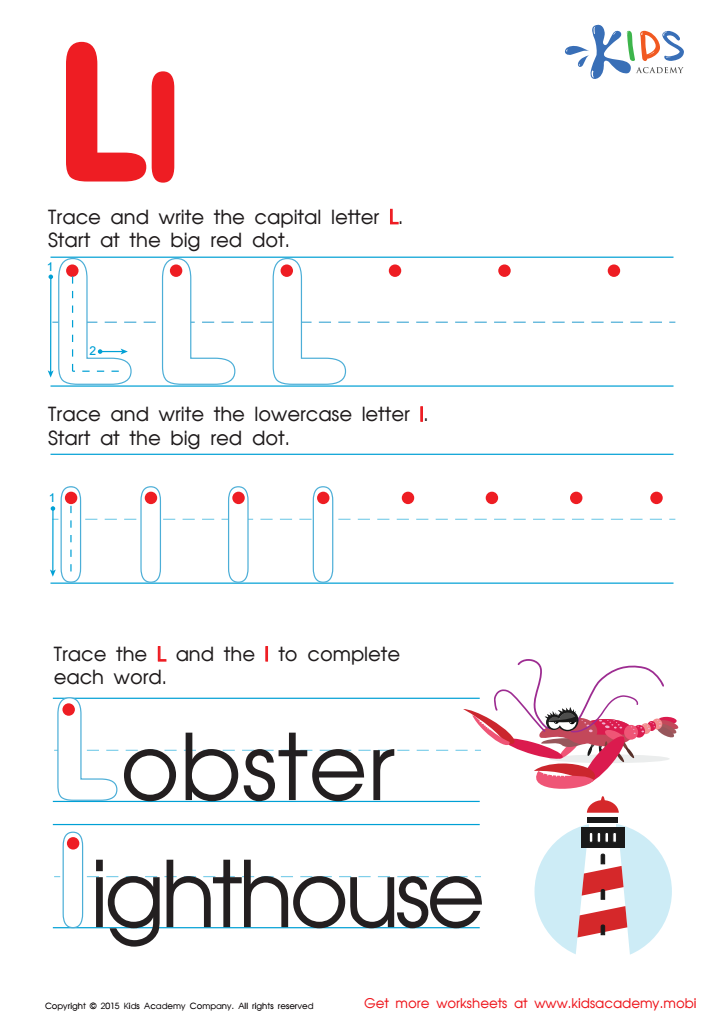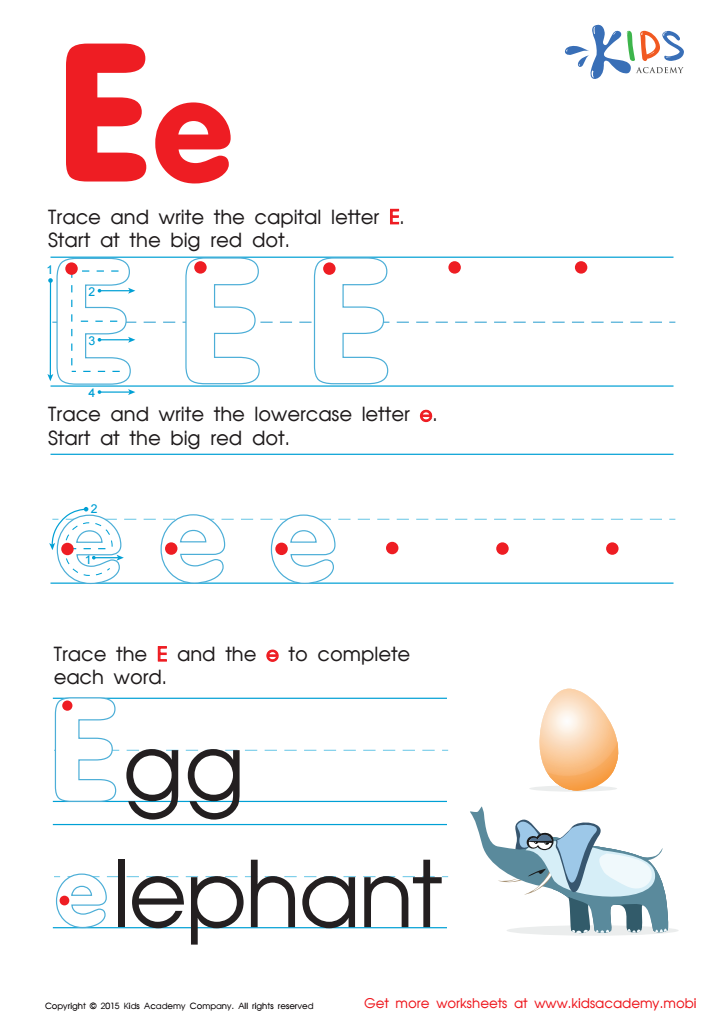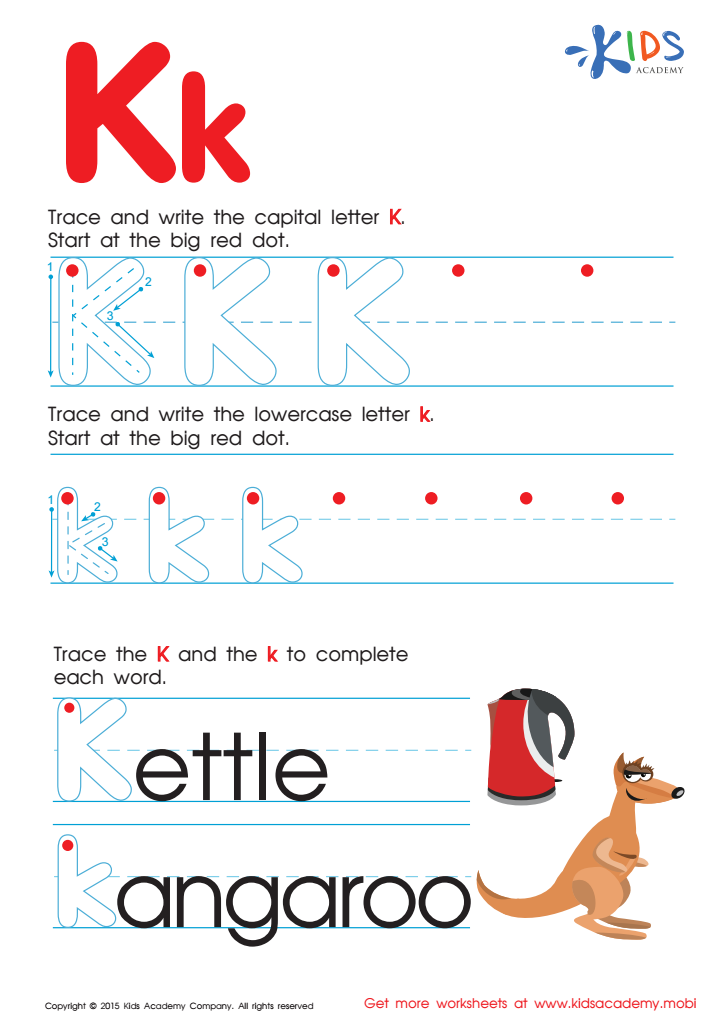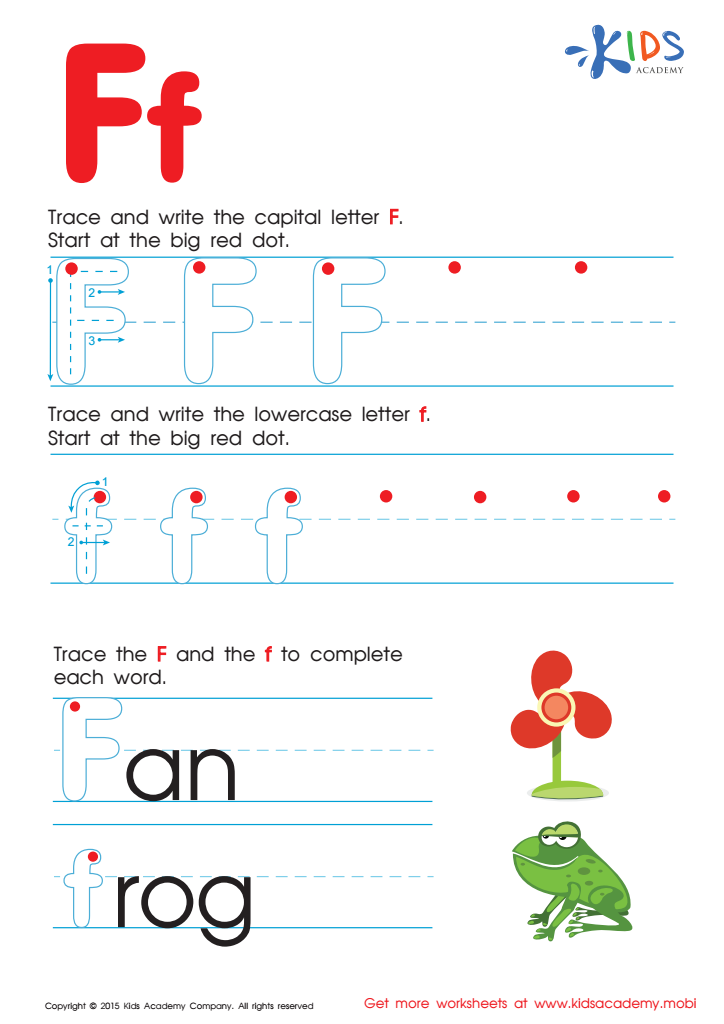Handwriting Skills Normal Letter Recognition Worksheets for Ages 4-5
5 filtered results
-
From - To
Enhance your child's handwriting and letter recognition skills with our engaging "Normal Letter Recognition Worksheets" designed specifically for ages 4-5. These interactive activities promote early literacy by helping young learners recognize letters while developing crucial fine motor skills. Each worksheet features fun themes and illustrations that captivate children’s interest, encouraging them to practice both upper and lowercase letters. As they trace and write, kids will build confidence in their handwriting abilities and boost their understanding of the alphabet. Perfect for home or classroom use, these worksheets lay a strong foundation for future reading and writing success! Start your child’s learning journey today!


Letter Q Tracing Page


Letter L Tracing Page


Letter E Tracing Page


Letter K Tracing Page


Letter F Tracing Page
Parents and teachers should prioritize handwriting skills and normal letter recognition for children aged 4-5 because these foundational abilities are crucial for academic success and cognitive development. At this age, children are like sponges, rapidly absorbing information and developing skills that will be essential throughout their education. Handwriting skills help infants develop fine motor coordination, improve focus, and enhance memory retention. By mastering the formation of letters, children gain confidence in their writing abilities, which is fundamental for future tasks like journaling, completing assignments, and expressing themselves.
Normal letter recognition—identifying and understanding letters—is equally important. It builds the foundation for reading and spelling, enabling children to connect phonetic sounds with written symbols. This skill enhances literacy development and supports the transition from pre-reading to actual reading, which is pivotal for success in early education.
Furthermore, good handwriting and letter recognition promote self-expression and creativity. Encouraging these skills can instill a lifelong love of learning and reading. By supporting children in developing their handwriting and letter recognition at this early age, parents and teachers play a vital role in setting them up for a successful educational journey and fostering essential communication skills.
 Assign to My Students
Assign to My Students






















